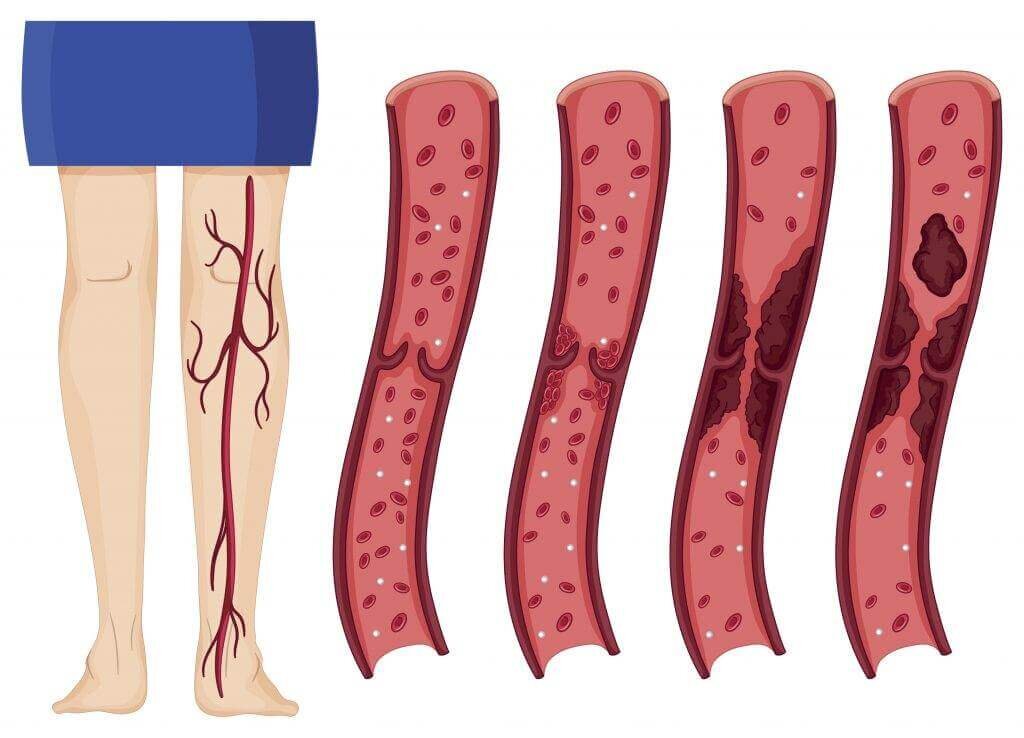Deep Vein Thrombosis: Symptoms, Causes, and Treatments
If you are a frequent flyer, you've probably heard about DVT, short for Deep Vein Thrombosis. DTV is a blood clot in the larger veins found deep inside the leg. If the blood clot dislodges from the vein wall and moves through the venous system, it could eventually block a vein in the heart, brain, or lungs. This could pose a danger to your health.
In some more serious conditions, pulmonary embolism, a life-threatening risk of DVT, can happen.
Causes of DVT
Sitting or standing for a long period of time. When you remain in the same position, you are less likely to engage the muscles in your legs. Lack of activity slows blood circulation, which could lead to the formation of blood clots.
Diagnosed vein diseases
Blood clotting disorders. Some people are more vulnerable to Deep Vein Thrombosis (DVT) as they inherit a disorder that makes their blood more likely to clot. However, unless combined with other risk factors, this disorder might not lead to blood clots.
Recent surgery. If you have recently undergone surgery, chances are that your blood vessels might have been damaged, resulting in the development of a blood clot. Staying in bed without much movement after the surgery also increases your blood clot risks.
High cholesterol
High blood pressure
Smoking
Excess weight. Being overweight increases the pressure in the veins in your pelvis and legs
Warning Symptoms - When to See a Vein Doctor Near Me?
Intense pain or cramping in the calves
Tenderness in the leg
Swelling in your foot, ankle, or legs
Warmth: a skin area feel warmer than the surrounding.
Changes in skin color: if you identify any skin discoloration such as reddish, pale, or bluish color, seek your provider or vein specialist for medical advice.
Schedule a Free Vein Screening
How To Prevent DVT
Avoid sitting still and/or crossing your legs while sitting.
Exercises: Frequent exercises have proved their effectiveness in preventing vein diseases and blood clot forms. Swimming, walking, or riding a bike are good low-intense activities.
Wear comfortable clothes. Tight-fitting clothes can contribute to poor circulation.
Don't smoke or consume excessive amounts of sodium and alcohol. This restricts blood flow and increases higher risks of blood clots.
Wearing Compression Stockings: Compression socks provide external support to vein walls, which creates good blood flow and helps minimize and control leg and ankle swelling.
Find Vein Clinics Near Me
DVT is a life-threatening medical condition. Find your vein specialist at your nearest vein clinic immediately if you are showing any DVT signs or symptoms. A vein doctor will check out your symptoms with an ultrasound screening to diagnose your vein condition and plan out your vein treatment.
Contact us at (888)-782-8346 to have your concern about clot breaks, vascular diseases, leg veins, etc. answered. Book a free screening with our board-certified vein doctors to find out about your risk factors, vein conditions, treatment plan, and insurance coverage.

